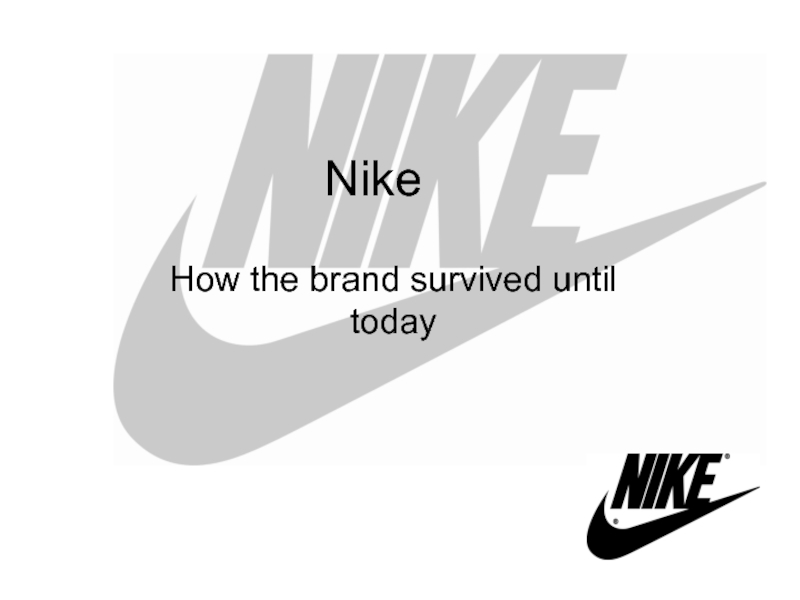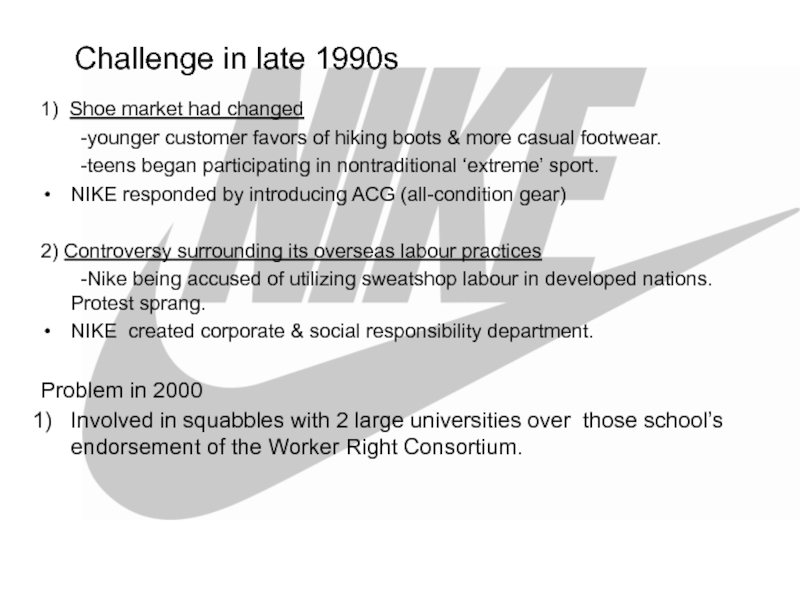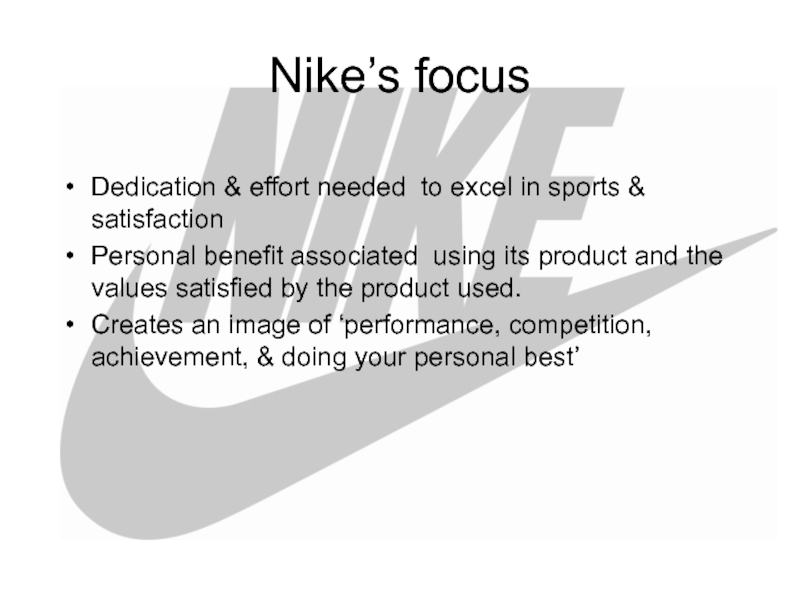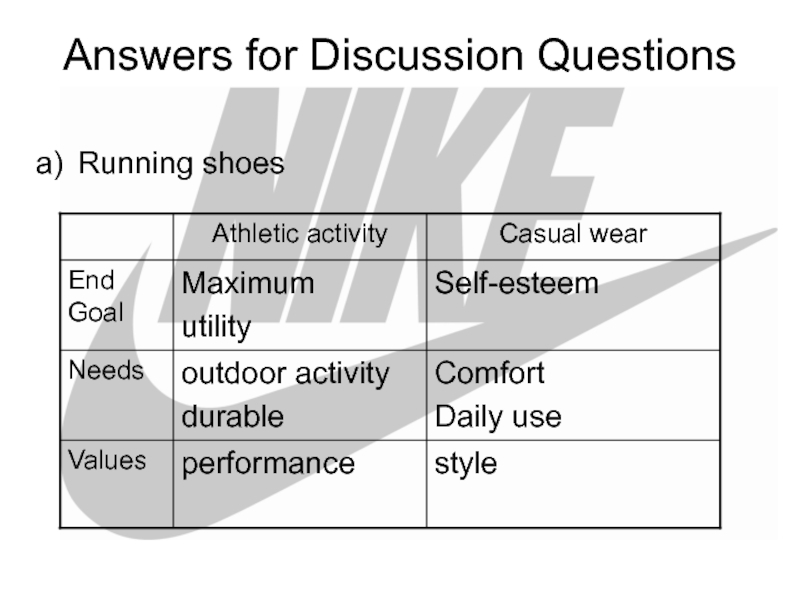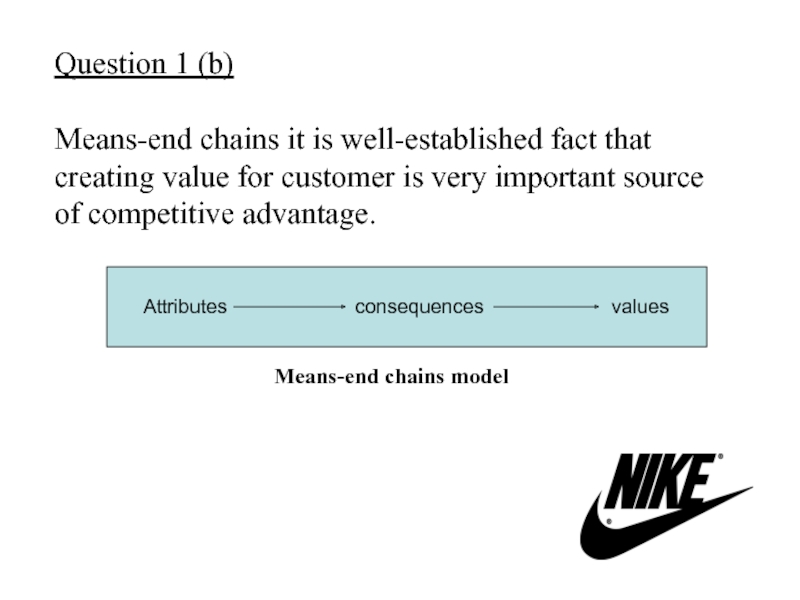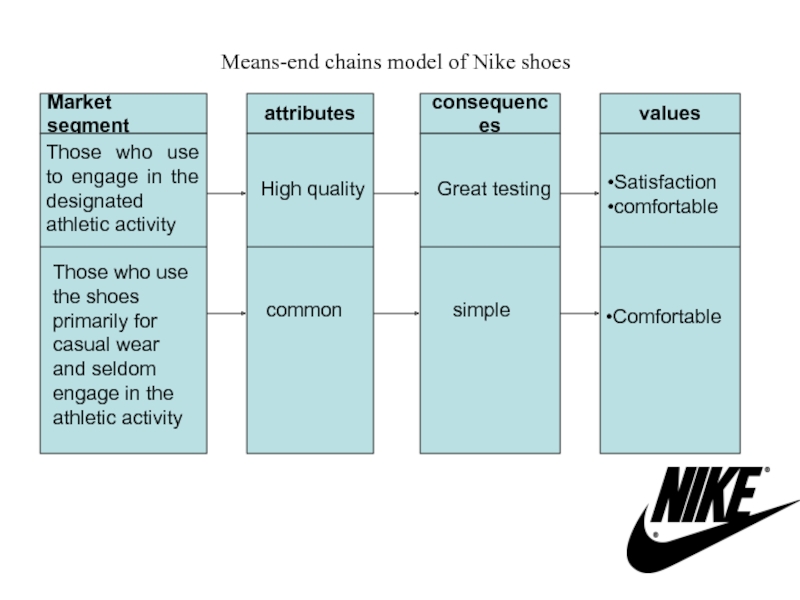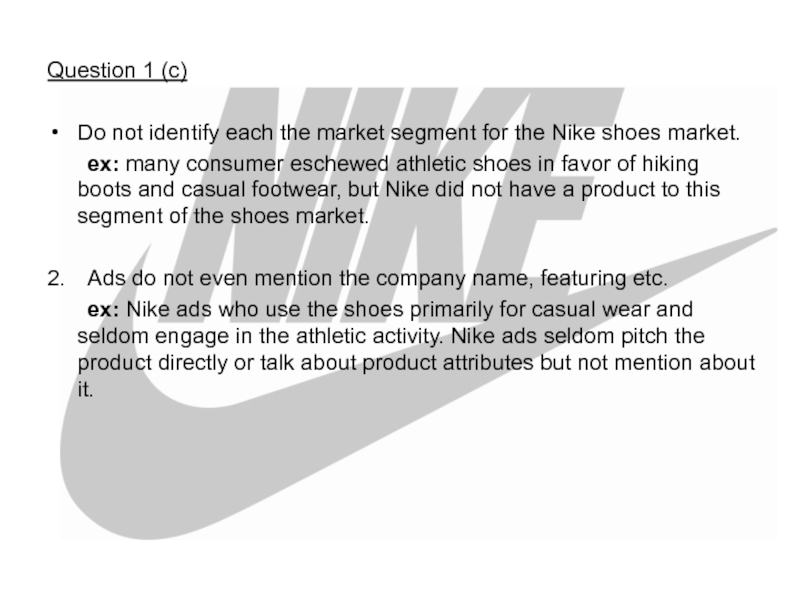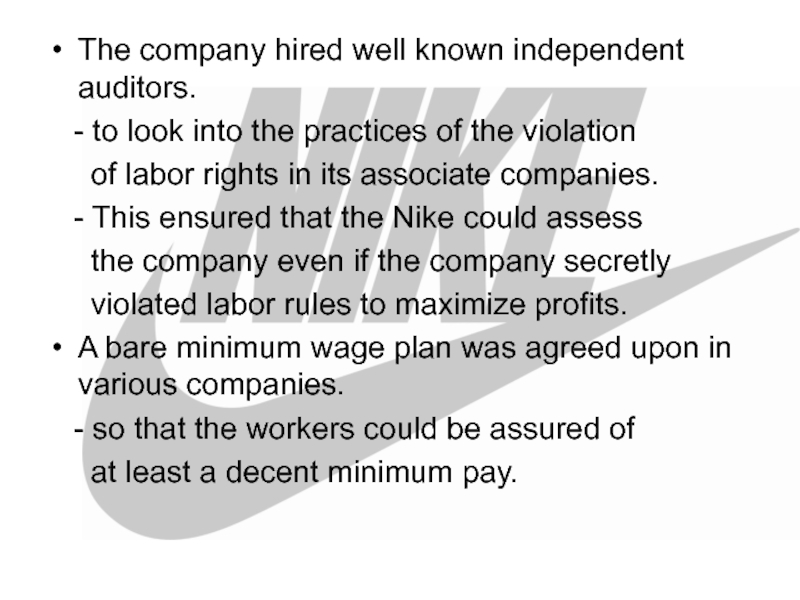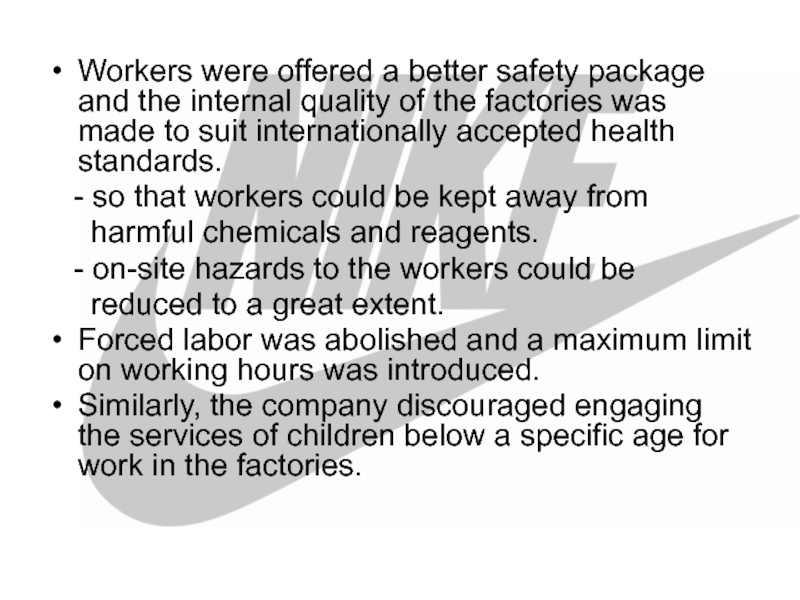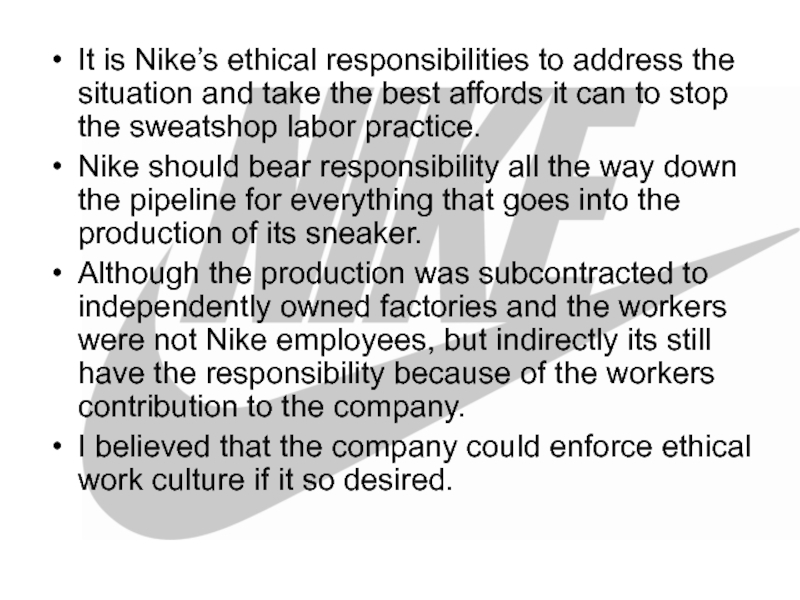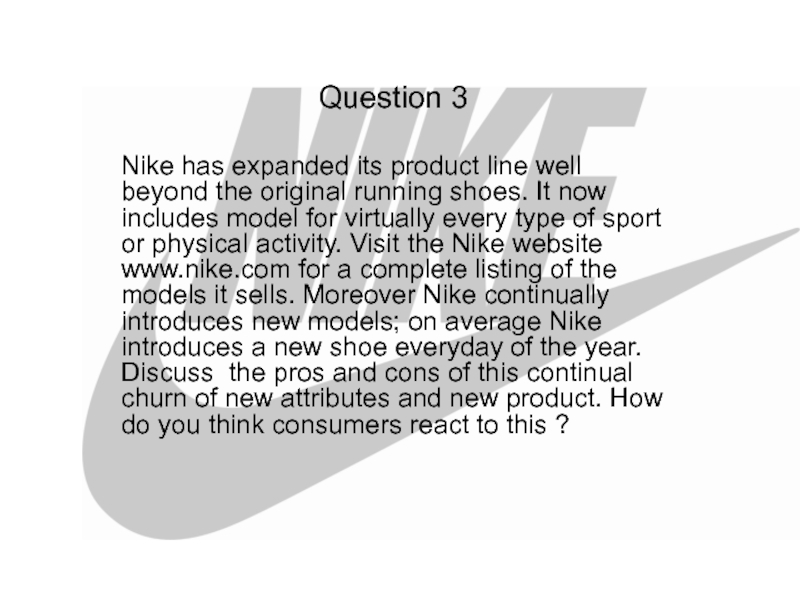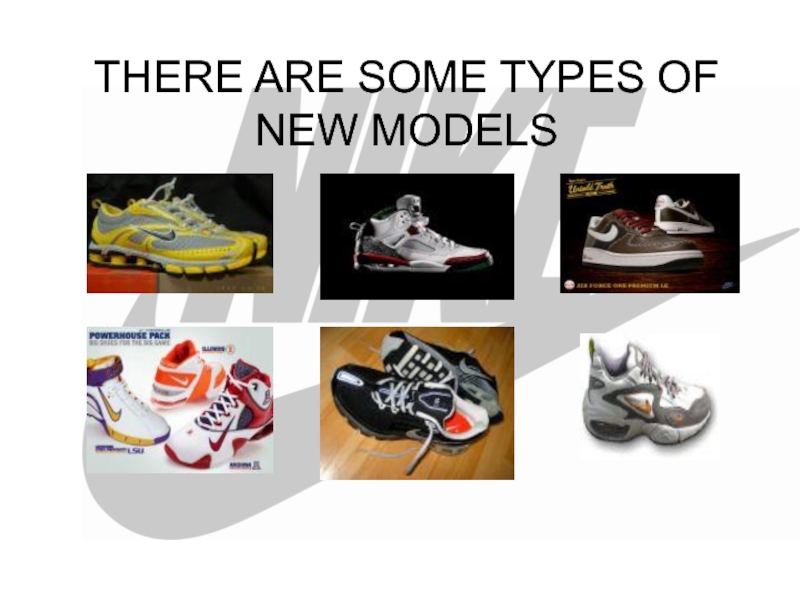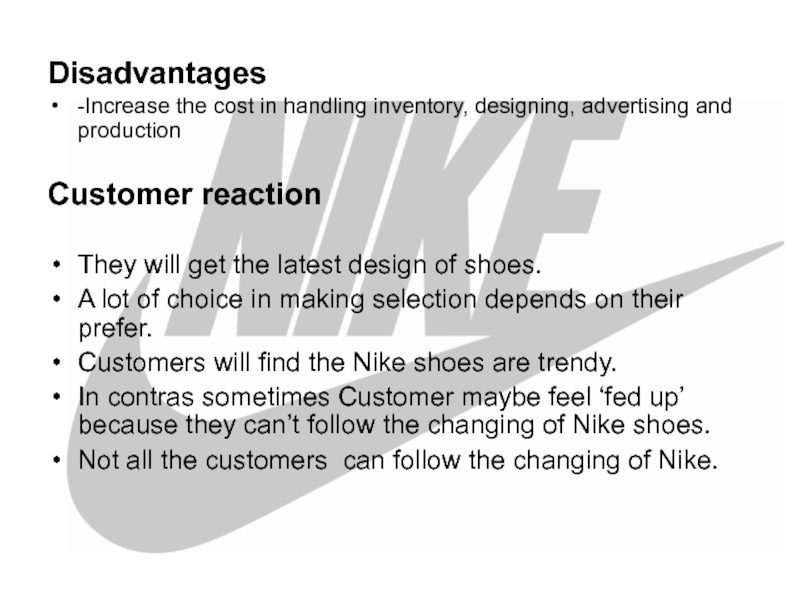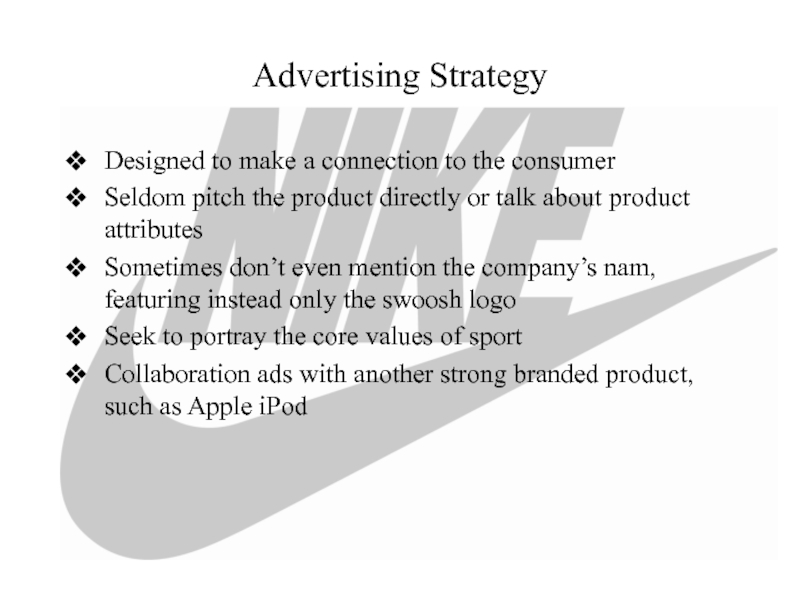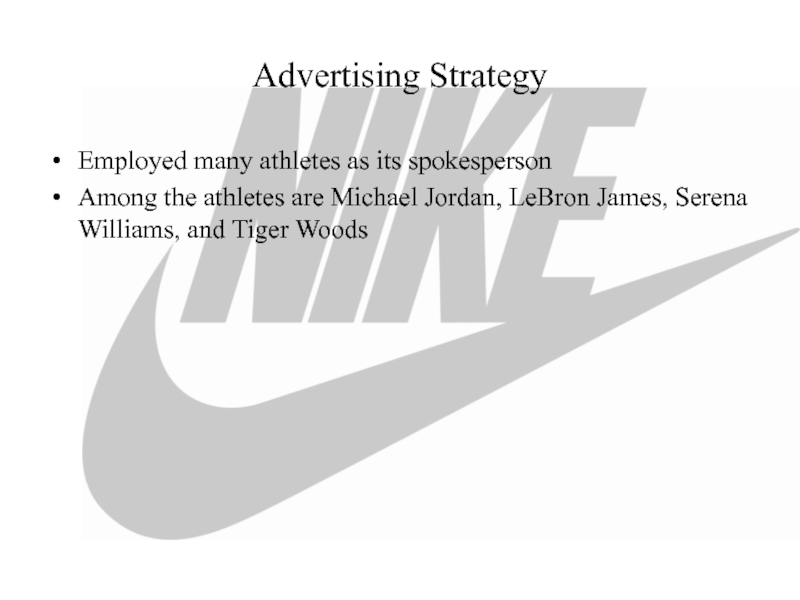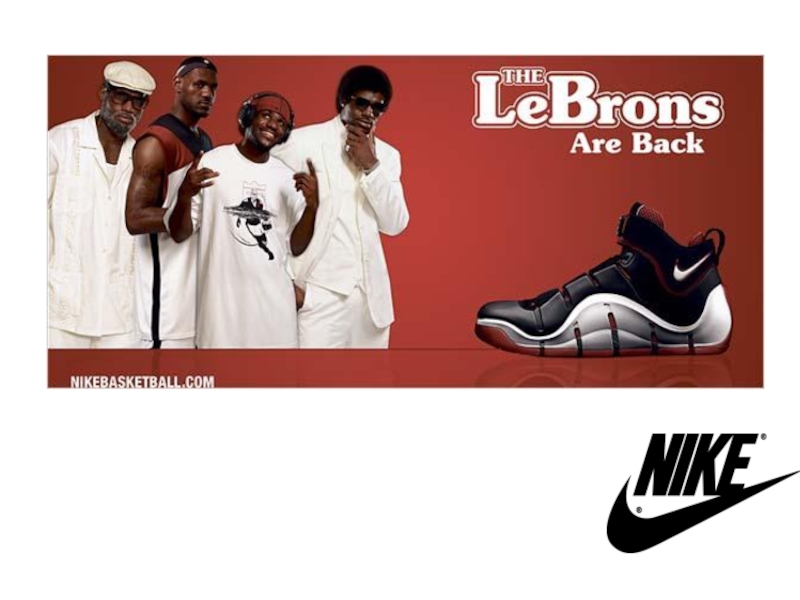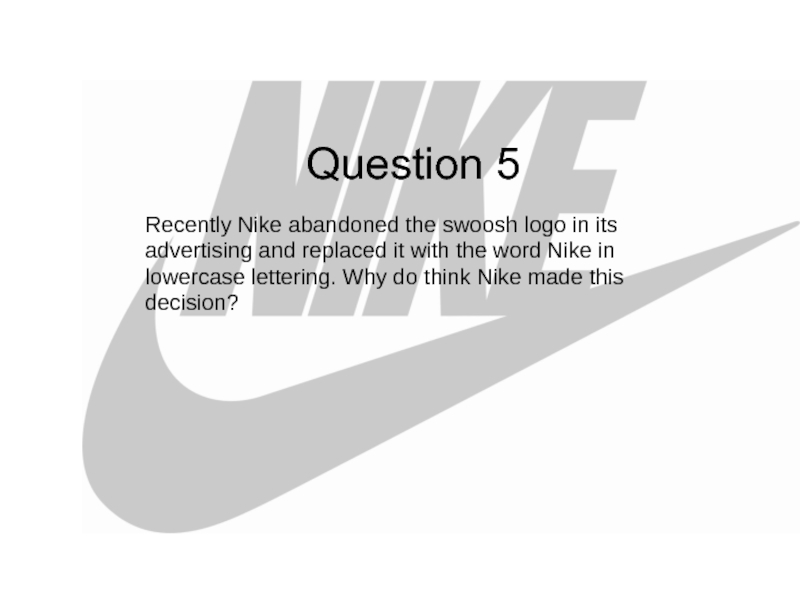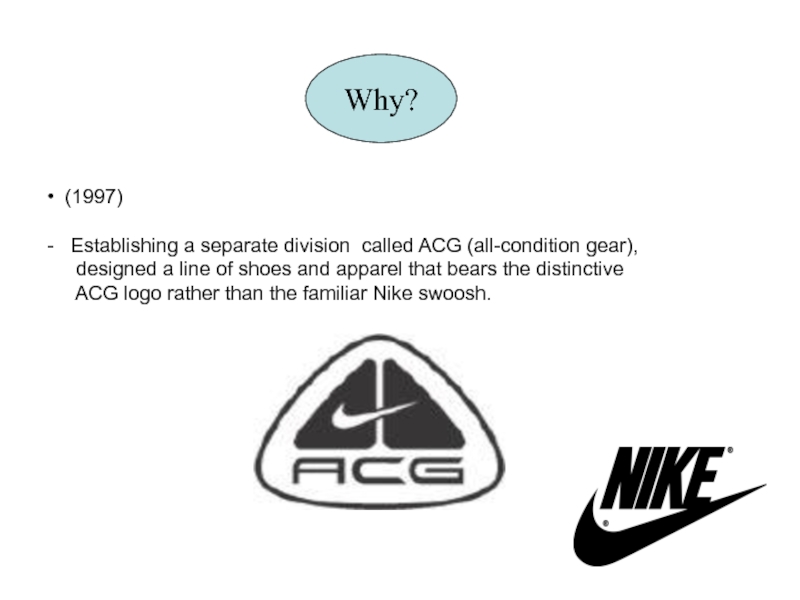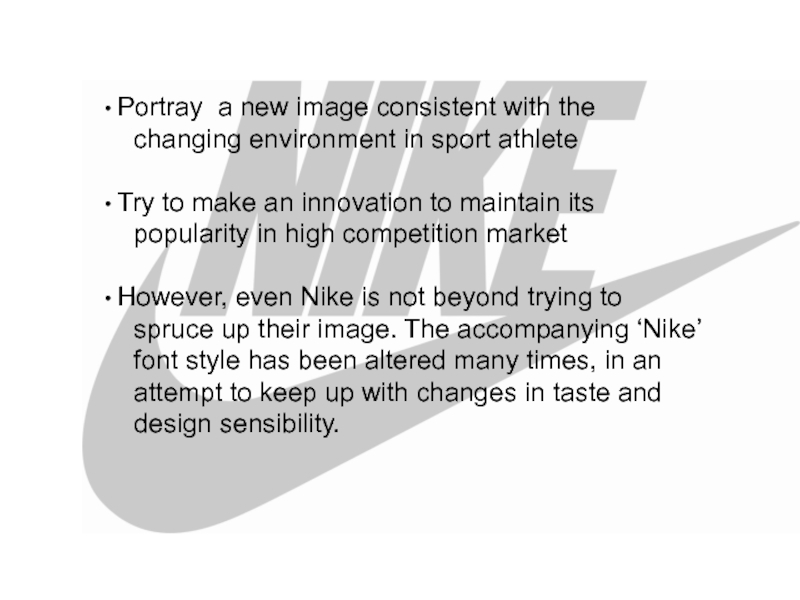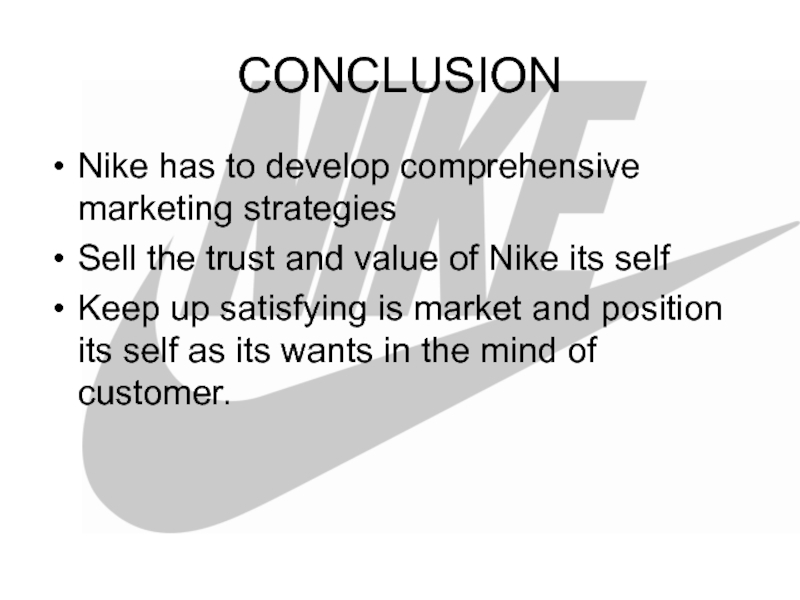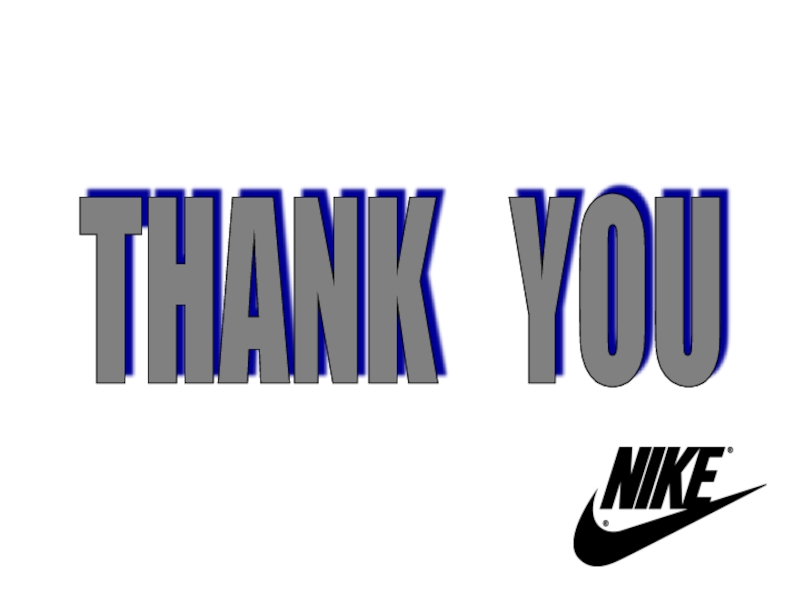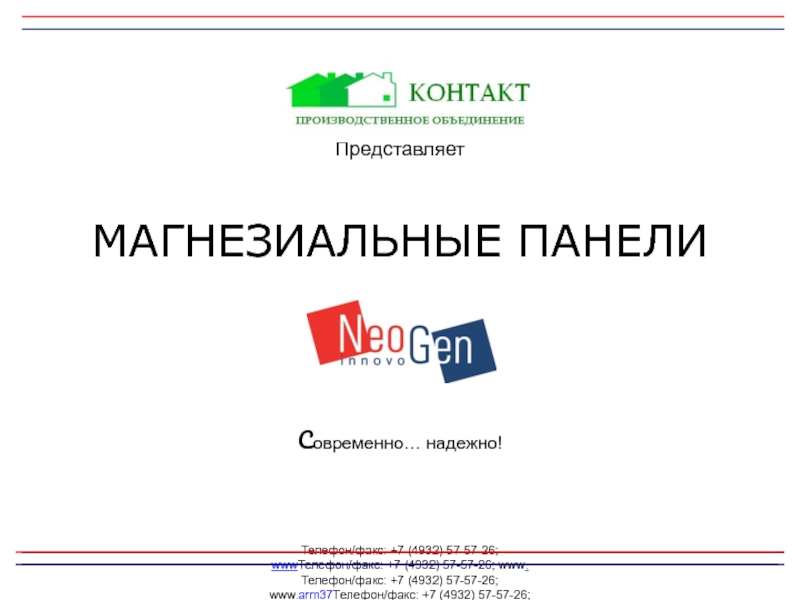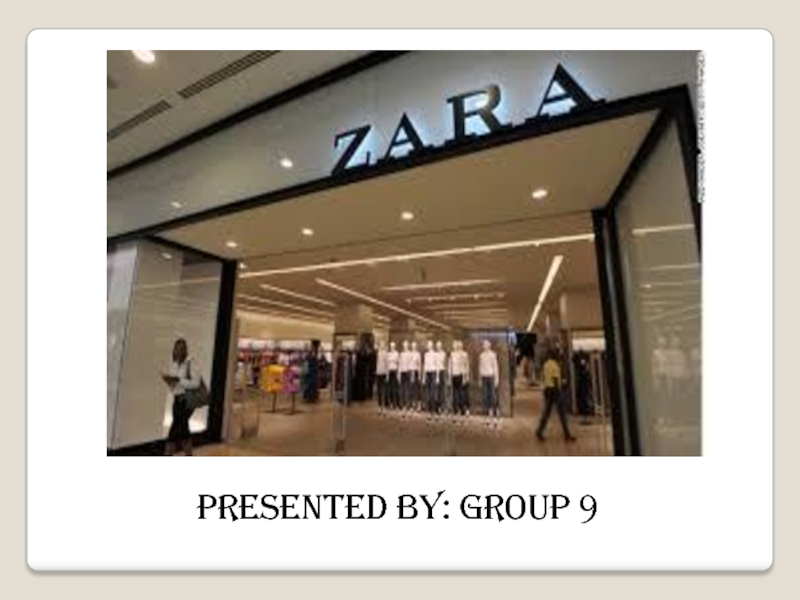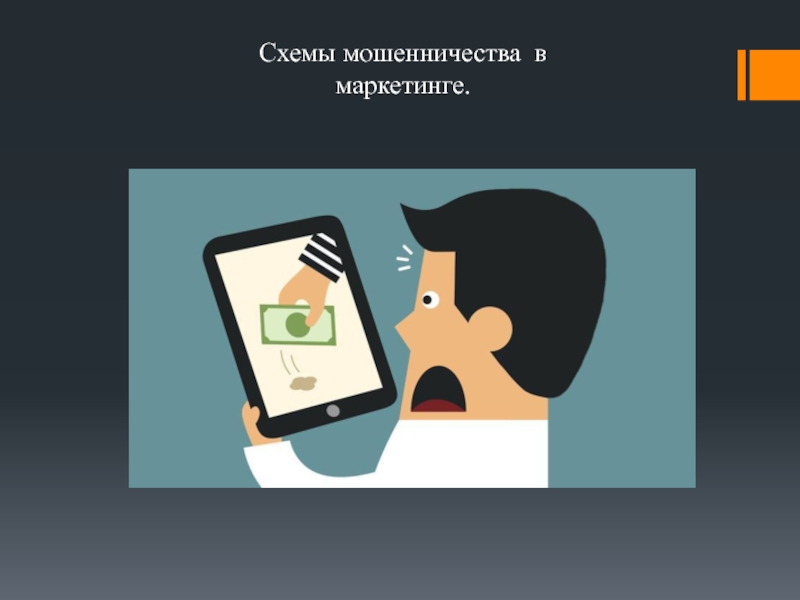- Главная
- Разное
- Дизайн
- Бизнес и предпринимательство
- Аналитика
- Образование
- Развлечения
- Красота и здоровье
- Финансы
- Государство
- Путешествия
- Спорт
- Недвижимость
- Армия
- Графика
- Культурология
- Еда и кулинария
- Лингвистика
- Английский язык
- Астрономия
- Алгебра
- Биология
- География
- Детские презентации
- Информатика
- История
- Литература
- Маркетинг
- Математика
- Медицина
- Менеджмент
- Музыка
- МХК
- Немецкий язык
- ОБЖ
- Обществознание
- Окружающий мир
- Педагогика
- Русский язык
- Технология
- Физика
- Философия
- Химия
- Шаблоны, картинки для презентаций
- Экология
- Экономика
- Юриспруденция
Nike. How the brand survived until today презентация
Содержание
- 1. Nike. How the brand survived until today
- 2. The Journey 1960s-Phillip Knight(ceo) & William Bowerman
- 3. Problems in mid 1980s: Demographic changes
- 4. Challenge in late 1990s 1) Shoe market
- 5. Nike’s focus Dedication & effort needed to
- 6. Answers for Discussion Questions Running shoes
- 7. Question 1 (b) Means-end chains it
- 8. Market segment consequences attributes values
- 9. Question 1 (c) Do not identify
- 10. Question 2 Discuss your reaction
- 11. Nike’s create a new position for a
- 12. The company hired well known independent auditors.
- 13. Workers were offered a better safety package
- 14. It is Nike’s ethical responsibilities to address
- 15. Question 3 Nike has expanded its
- 16. THERE ARE SOME TYPES OF NEW MODELS
- 17. There are effect that Nike
- 18. Disadvantages -Increase the cost in handling inventory,
- 19. Advertising Strategy Designed to make a connection
- 21. Advertising Strategy Employed many athletes as its
- 23. Question 5 Recently Nike abandoned the
- 24. (1997)
- 25. Portray a new image consistent with
- 26. CONCLUSION Nike has to develop comprehensive marketing
- 27. THANK YOU
Слайд 2The Journey
1960s-Phillip Knight(ceo) & William Bowerman partnered to sell
1970s- cash in on America’s running craze:
1)1972- $ 3 million
2)1980- $ 270 million
3)1986- $ 1 billion
Слайд 3Problems in mid 1980s:
Demographic changes
-
2. Market for running shoes become highly segmented (mature market)
-many different models for every nuisance of customer need.
Competition
-Reebok create new market orientations to sell sneakers based on fashion rather than performance
Results from the problem
1984- Nike’s unit sales decreased 17%
- market share declined 31% to 24%
1987- have only 18.6 % share of shoes market
Action taken
Introduced technological features to enhance shoes performance.
Use of celebrities as spokesperson. Air Jordan was a major hit.
Using advertising as marketing strategy
Слайд 4Challenge in late 1990s
1) Shoe market had changed
-younger customer favors of
-teens began participating in nontraditional ‘extreme’ sport.
NIKE responded by introducing ACG (all-condition gear)
2) Controversy surrounding its overseas labour practices
-Nike being accused of utilizing sweatshop labour in developed nations. Protest sprang.
NIKE created corporate & social responsibility department.
Problem in 2000
Involved in squabbles with 2 large universities over those school’s endorsement of the Worker Right Consortium.
Слайд 5Nike’s focus
Dedication & effort needed to excel in sports & satisfaction
Personal benefit associated using its product and the values satisfied by the product used.
Creates an image of ‘performance, competition, achievement, & doing your personal best’
Слайд 7Question 1 (b) Means-end chains it is well-established fact that creating value
Attributes consequences values
Means-end chains model
Слайд 8Market segment
consequences
attributes
values
Those who use to engage in the designated athletic activity
High
Great testing
Satisfaction
comfortable
Those who use the shoes primarily for casual wear and seldom engage in the athletic activity
common
simple
Comfortable
Means-end chains model of Nike shoes
Слайд 9Question 1 (c)
Do not identify each the market segment for the
ex: many consumer eschewed athletic shoes in favor of hiking boots and casual footwear, but Nike did not have a product to this segment of the shoes market.
2. Ads do not even mention the company name, featuring etc.
ex: Nike ads who use the shoes primarily for casual wear and seldom engage in the athletic activity. Nike ads seldom pitch the product directly or talk about product attributes but not mention about it.
Слайд 10Question 2
Discuss your reaction to Nike’s handing
of the
Слайд 11Nike’s create a new position for a vice president for corporate
- This show Nike’s is serious about its
mistake and the company will take full
commitment to make improvement.
- Nike tries to portrait its new image of a
company that will promote good work
culture.
Слайд 12The company hired well known independent auditors.
- to
of labor rights in its associate companies.
- This ensured that the Nike could assess
the company even if the company secretly
violated labor rules to maximize profits.
A bare minimum wage plan was agreed upon in various companies.
- so that the workers could be assured of
at least a decent minimum pay.
Слайд 13Workers were offered a better safety package and the internal quality
- so that workers could be kept away from
harmful chemicals and reagents.
- on-site hazards to the workers could be
reduced to a great extent.
Forced labor was abolished and a maximum limit on working hours was introduced.
Similarly, the company discouraged engaging the services of children below a specific age for work in the factories.
Слайд 14It is Nike’s ethical responsibilities to address the situation and take
Nike should bear responsibility all the way down the pipeline for everything that goes into the production of its sneaker.
Although the production was subcontracted to independently owned factories and the workers were not Nike employees, but indirectly its still have the responsibility because of the workers contribution to the company.
I believed that the company could enforce ethical work culture if it so desired.
Слайд 15Question 3
Nike has expanded its product line well beyond the original
Слайд 17
There are effect that Nike have to face when Nike introduces
Advantages
Nike will able to improve their performance in searching
new design and styles of shoes.
- Customers will have a lot of choice in making selection
depends on their wants.
Nike will improve their company and brand image at the
same time expand their market share.
Слайд 18Disadvantages
-Increase the cost in handling inventory, designing, advertising and production
Customer reaction
They
A lot of choice in making selection depends on their prefer.
Customers will find the Nike shoes are trendy.
In contras sometimes Customer maybe feel ‘fed up’ because they can’t follow the changing of Nike shoes.
Not all the customers can follow the changing of Nike.
Слайд 19Advertising Strategy
Designed to make a connection to the consumer
Seldom pitch the
Sometimes don’t even mention the company’s nam, featuring instead only the swoosh logo
Seek to portray the core values of sport
Collaboration ads with another strong branded product, such as Apple iPod
Слайд 21Advertising Strategy
Employed many athletes as its spokesperson
Among the athletes are Michael
Слайд 23Question 5
Recently Nike abandoned the swoosh logo in its
advertising and
lowercase lettering. Why do think Nike made this
decision?
Слайд 24
(1997)
Establishing a separate division called ACG (all-condition gear),
ACG logo rather than the familiar Nike swoosh.
Why?
Слайд 25 Portray a new image consistent with the
Try to make an innovation to maintain its
popularity in high competition market
However, even Nike is not beyond trying to
spruce up their image. The accompanying ‘Nike’
font style has been altered many times, in an
attempt to keep up with changes in taste and
design sensibility.
Слайд 26CONCLUSION
Nike has to develop comprehensive marketing strategies
Sell the trust and value
Keep up satisfying is market and position its self as its wants in the mind of customer.
